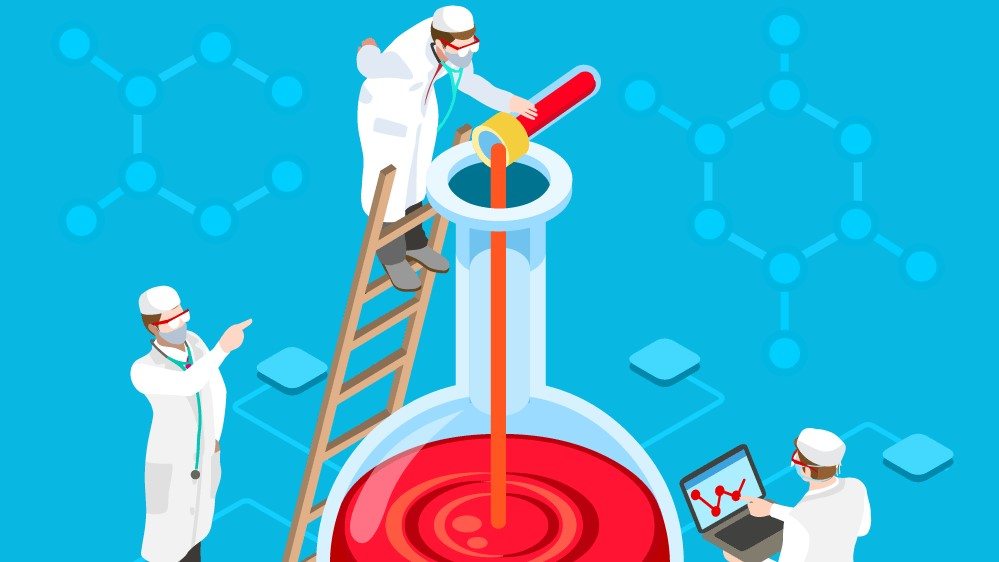Projects come in all shapes and sizes, from my simple weekend project to rebuild my patio (stakeholders: wife and cat) to the creation of major pieces of national infrastructure and beyond. By their heavily regulated yet commercially competitive nature, pharmaceutical industry projects often tend to fall towards the upper end of the complexity scale.
When product development is concerned, things get more difficult again: You are at the mercy of the unknown when treading new ground. I know quite well how many bricks an hour I can mortar onto my patio’s retaining wall, but have no real idea in advance as to whether my drug’s particle size distribution will be adequately stable after I have temperature-cycled my new inhalation product for a few weeks. By definition, experiments are only performed when we can’t be exactly sure of what will happen. Hence, projects involving experimentation—as all pharmaceutical development projects inevitably do—always contain an element of uncertainty. And that uncertainty can be on a scale not routinely experienced by civil engineers, especially amateur weekend ones.
All of the above is probably obvious. What can come as a shock, though, is the fact that generic product development projects can in some ways be, paradoxically, more difficult and harder to plan than the development of new medicines. True, you know before you start that the end product can be created and does work. But at times, especially with difficult dosage forms such as any inhalation product, it can seem akin to recreating the “Mona Lisa” and trying to get an exact match. You can study the original as much as you want, but creating an acceptable copy requires great expertise and experience—and experimentation. And the regulatory authorities can be every bit as demanding as art critics, and for very good reason.
So, having established that pharmaceutical development projects are usually both challenging and uncertain, what skills are required of the poor beleaguered project manager?
Perhaps the greatest need of a good project leader is an ability for clear, calm thinking in the midst of complexity. No pharmaceutical development project is ever anything other than complex, and without a strong toolkit of techniques rigorously applied, chaos can quickly ensue.
The Journey to Product Development
Being by definition a one-off non-repetitive task, a product development project can be thought of like a journey. It will pass through multiple stages, different things will be important or rate-determining at various times, and a significant number of different functions and disciplines will be involved, whether internal to the sponsor company or outsourced to others. At a minimum, a typical project in this industry will involve Research and Development (R&D), Regulatory Affairs, Manufacturing, Engineering, Sourcing/Purchasing, Vendor Management, Marketing, Finance, and Sales. And if you don’t employ saints or super-heroes, depending upon how well the team can handle stress, it will probably also need the help of Human Resources at some stage.
The first important task facing the project manager is not to assemble and build a cohesive team, vital though that is, but is to establish—with great clarity—exactly what the objectives are. The principal sponsor(s) of the project, usually one or more directors or senior managers, need to lay down unambiguous guidance as to what is necessary for success. That direction might not be instantly available—i.e., marketing might need to do some in-depth research first—but specific timelines need to be dictated for the project’s completion.
Typically, the criteria for success need to include considered goals for project deliverables (product type(s) and principal features and benefits, manufacturing and selling costs, etc.), significant project timelines (especially project completion and product launch), and project budget. A conscious decision needs to be made on where the project is to sit within the triangle of quality, time, and cost. Any insistence by the project sponsor that all three can be optimized must be met with the strongest resistance. There is always a trade-off, and you can never have all three at once.
Without this trade-off being explicitly acknowledged and addressed by senior management—and written down in a fixed project “charter”—then the project will sooner or later run into problems. Typically, many aspects of quality are non-negotiable in pharmaceutical product development projects, although even here it is very easy to suffer from “scope creep” as the project progresses and the market changes. More typically, it is time and cost that are the main trade-off protagonists. Every project is different, so the balance varies, but without clear direction from above the project team is unlikely to make consistent, coherent decisions as the project progresses.
Understanding the Quality-Time-Cost Triangle
In real life, determining the Quality-Time-Cost triangle can be made more complicated by the number of functions and individuals who feel they have a stake in the outcome. Stakeholders never seem to all pull in one direction! Understanding the hierarchy of players, and establishing the project’s ground-rules are possibly the most important things the project manager will do during the entire endeavour. A strong charter agreed to and understood by all is of paramount importance. Time spent in these early stages is not the luxury it often feels, and will certainly pay off, even on time-sensitive projects. The charter need not be set in stone and should be subject to periodic review (e.g., in light of changed market circumstances)—but it should be changed a lot less frequently than it sometimes is.
Then, having agreed to the scope, estimated and obtained the resources, made provision in timelines and costs for the inevitable “issues,” and appointed the correct mix of key individuals to take responsibility for major areas of the overall work package, the project manager can now settle down to do what they love the most, which is to make endless multicolored Gantt charts.
Beautiful as a well-crafted Gantt chart can no doubt be—to a certain sort of person—the real job of a project manager is almost entirely people management. Keeping the team aligned, keeping stakeholders informed, managing problems, rework and contingencies, and teasing potential issues out before they become a source of delay or obstruction is the project manager’s real job on any major project. The most important skills are communication skills, along with the ability to hold vast amounts of information in your head and to stay calm and positive when the going gets choppy. No pharmaceutical product development project of modern times has probably ever been plain sailing: There will always be patent landscapes to navigate, unexpected data from the labs, changes of strategy from competitors, and a thousand other things to keep the working day interesting. But a clear and well thought out charter in the hands of a project manager who is good at leading people stands a good chance of delivering that exciting new product that will keep the sales force leaping out of bed every day.
As a footnote, there is one way to break free from the Quality–Time–Cost triangle, and that is to overcome the Time constraint. True, the market isn’t likely to show much mercy if you launch your great new product three years after the competition launched theirs. So the end point is fixed. But the starting point isn’t. Product quality (features, unique selling points, etc.) can be impressive, project costs can be contained and reasonable, and you can be on time to capture a good position in the market if you start work on the project much earlier than you otherwise would. And that is where the astute companies operate: Ahead of the curve, and laying the Intellectual Property obstacle course rather than having to navigate a tortuous and expensive passage around everybody else’s.
The R&D Key
One key, of course, is an R&D department that is allowed to work in the long-term as well as the immediate. That is encouraged to explore new possibilities long before everybody else, while there is still time to loop and back-track and try multiple parallel approaches, all on a small scale when everything is relatively cheap. The so-called “fuzzy front end” of new product development really is fuzzy. There are always setbacks and problems to be overcome, and new ways to be tried. The important thing is to have the foresight and the ring-fenced resources to be working on the long-term stuff early. Such a philosophy, resourced and supported as part of a pharmaceutical development company’s culture, is a significant advantage when it comes to achieving productivity and success in subsequent later stage product development when the scale of the project is far greater, and everything costs more and is under much more management scrutiny.
But having a well-organized R&D department at the forefront of the field is only one part of the jigsaw of success. The second key is to have a Marketing department that understands today’s customers and also tomorrow’s potential customers far better than they themselves know what they want—a Marketing department with a clear vision of where they’re going. And the third key is to have a very close working relationship between those two departments so that R&D’s prophetic offerings are a great fit to the deeply insightful needs identified by Marketing. Bring those two functions close enough together and you have the building blocks of an organization that will be able to achieve projects on time, in full, and on budget. It’s all about bricks and triangles.








